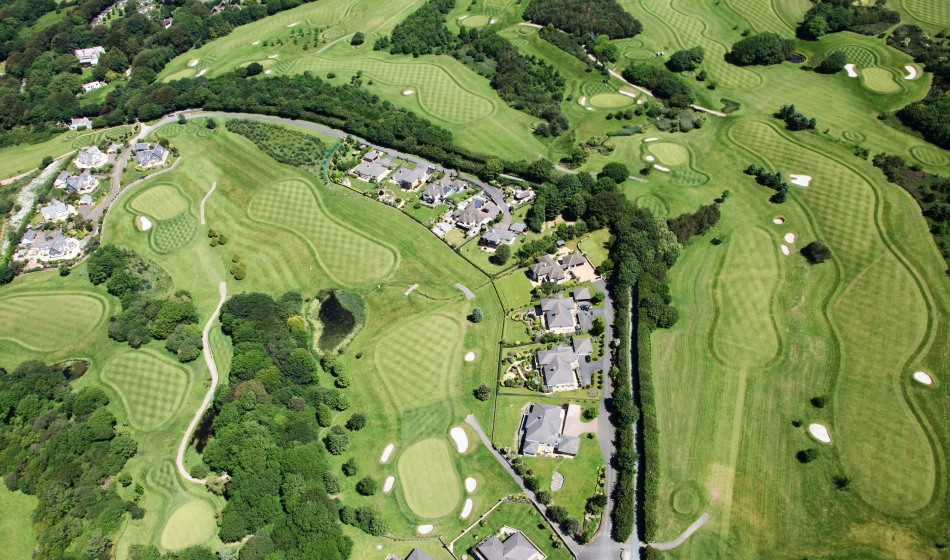
Dimensions of a Golf Course: Complete Guide
17 de February de 2024
Have you ever wondered how extensive a golf course can be? Golf courses are spaces of precision and beauty, where every meter counts and nature merges with the sport. In this complete guide, we will explore the dimensions that turn these grounds into true works of sports art.
From the tee-off to the last putt, the measurements of a golf course are key to the game. It doesn’t matter if you’re an enthusiast, a professional, or just curious, understanding the dimensions will give you a new perspective on this fascinating world.
Dive with us into the architecture of golf courses. You’ll discover how they are planned, designed, and, most importantly, how the dimensions affect the strategy and challenge that each hole represents. Get ready for a tour through the ultimate guide to the dimensions of a golf course!
Design and Structure of Golf Courses
The design of a golf course is an art that combines aesthetics with functionality. Each course is unique, but all follow basic principles to ensure a challenging and enjoyable experience for golfers.
A central element is the variety of holes. You’ll find par 3, par 4, and par 5, each with its own character. These holes are strategically distributed to offer a dynamic and balanced pace of play.
The nature of the terrain plays a crucial role. Designers take advantage of the natural relief to create obstacles like lakes, bunkers, and terrain undulations, which challenge the player’s skill and strategy.
The teeing areas, known as ‘tees’, are the starting point of each hole. They are located at different heights and distances, offering multiple levels of difficulty for all types of players.
The greens are key areas where the outcome of each hole is defined. Their design involves subtle and varied contours that demand precision and a good touch with the putter.
Furthermore, the design considers the approach areas and the fairways, which should be wide and fair, guiding the golfer towards the green but penalizing errant shots.
Lastly, designers focus on environmental integration. A golf course must harmonize with the surroundings, preserving native vegetation and respecting local wildlife.
The structure of a golf course is a work of engineering and creativity, designed to offer an unforgettable experience. Each hole is a new challenge and every round an opportunity to enjoy the beauty and complexity of this sport.
Standard Measurements and Hole Lengths
Understanding the standard measurements and the length of the holes is key to appreciating the strategy behind every swing in golf. A typical course stretches over 18 holes, each with its own character and challenge.
The length of the holes varies significantly, classified into three main categories:
- Par 3: The shortest holes on the course, usually measuring between 100 and 250 yards (between 91.44 meters and 228.6 meters). Ideal for honing precision and control.
- Par 4: These holes are of intermediate length, ranging between 250 and 475 yards (228.6 meters and 434 meters). They require a combination of power and strategy.
- Par 5: They are the giants of the course, with distances starting from 475 yards onwards (more than 434 meters). This is where golfers can demonstrate their strength in the drive.
In addition, the total length of a professional golf course usually ranges between 6,500 and 7,200 yards (5943 and 6583 meters). However, each course has its particular stamp, with variations that can challenge both novices and professionals.
The sum of all the pars of the holes gives the total par of the course, which generally ranges between 70 and 72. This number is the standard that players aspire to, although every stroke counts in the quest for victory.
Knowing these dimensions not only improves your understanding of the game but also prepares you to face each hole with the right strategy. So take note and prepare your clubs, because every meter counts in golf!
Configuration and Typology of Courses
In the world of golf, the configuration and typology of courses play a crucial role in the game experience. These not only challenge the players’ skills but also offer variety and visual beauty. Therefore, it’s important to know the different layouts that can exist.
The configuration of a course can be traditional or links. Traditional courses are designed with a sequence of holes that return to the clubhouse after the first nine and the second nine holes. Meanwhile, links, typical of the coasts of Scotland, present a linear journey along the coast with holes that follow in a straight line.
As for typology, there are four main types of courses found in most golf courses:
- Par 3: Short and precise, ideal for improving the short game.
- Par 4: The most common and require a combination of precision and power.
- Par 5: Longer and more challenging, allowing players to make the most of their drivers.
- Par 6: Uncommon, but offer a unique experience with their exceptional length.
Additionally, the variety of terrain significantly influences the game strategy. Course designers use natural elements like lakes, rivers, forests, and elevation changes to create unique and memorable courses.
Lastly, let’s not forget that each hole within a course has its own personality. This is due to the combination of distances, obstacles, and the assigned par, ensuring that no two holes are the same. Thus, each course becomes a different adventure. With this knowledge, you’ll be better prepared to face the challenges any golf course presents.
The dimensions of a golf course are as diverse as the challenges they present. From the undulating fairways to the meticulously designed greens, each hole is a universe in itself, waiting to be explored with every swing.
Remember that, beyond the standard measurements, the true magic of this sport lies in adaptation and strategy. Align your game with the unique characteristics of each course, and you’ll see how your golf experience enriches with every round.
No matter if you’re an excited beginner or an experienced professional, understanding the dimensions of a golf course is key to improving your game. Take the time to study the terrain, respect its contours and obstacles, and soon you’ll be playing with the confidence of a true connoisseur.
So, the next time you step onto a golf course do it with the knowledge and respect this noble sport deserves. And above all, enjoy the game and the unique landscape that each hole offers. See you on the course!
